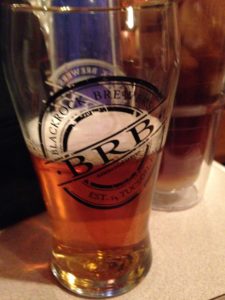Don’t Freeze Those Glasses!
 Nothing beats coming home from a hot day, opening the fridge and grabbing a beer. But what happens next is of optimal importance. Do you pop the top off that beer and pour it into a clean pint glass? Or do you open up the freezer and pour your brew into a frozen glass?
Nothing beats coming home from a hot day, opening the fridge and grabbing a beer. But what happens next is of optimal importance. Do you pop the top off that beer and pour it into a clean pint glass? Or do you open up the freezer and pour your brew into a frozen glass?
Don’t worry, we don’t judge. But we do educate! And if you are using a frozen mug or pint glass, you may want to rethink things.
By now you have heard that some beers are best enjoyed cold — pilsners, lagers, and hefeweizens come to mind. Others are best when consumed at room temperature — stouts, porters, IPAs, etc.
But absolutely no beer should be poured into a frozen glass! Here’s some reasons:
Taste. Say you have a super robust Belgian quad, filled with dense fig and raisin notes and a subtle burnt sugar finish. Sounds delightful, right? Now, let’s dump it into a frozen glass. When you take that first sip, what is the first thing that touches your lips? That frozen glass. And what comes next? A cold Belgian quad. The temperature of the glass and the now-colder beer will dull — or numb — your taste buds, preventing all the brewer’s hard work from being appreciated. Heck, it would be better if you drank the beer through a straw. (Um, don’t drink your beer through a straw.)
Carbonation. Like most things in life, beer needs to breathe. This means it must release some of the stored carbon dioxide used in the brewing process, giving the beer its aroma and reducing the filling effect of beer when ingested. The colder the beer, the less carbonation is released. If it’s released in your stomach, you feel more full and drink less beer. For shame! So using a frozen glass promotes the storage of carbonation in the beer and reduces its aroma.
Foam. Depending on the style of beer, a frozen glass will actually produce more foam due to its freezing temperature. This means more beer going down the drain and less going into you. There are two things that cause a beer to foam up — pressure and temperature. When beer is poured into a frozen glass, it reacts with the cold temperature and the ice crystals that form on the inside. This is not a good combination if you are trying to reduce foam.
Smell. Those ice crystals on the glasses don’t just cause foam, but they also absorb odors from the refrigerator. Yeah, it’s kinda like rolling your glass in that baking soda in your fridge and then pouring some beer into it. I’m sure that works for some people, but I’d rather taste the beer and not the musky smell of a three-year-old refrigeration unit.
Like we said earlier, we’re not going to judge you if you pour your beer into a frozen glass. That’s up to you. But if we’re hanging out at your place, make sure you ask us first. We’re not interested in tasting last week’s leftovers!